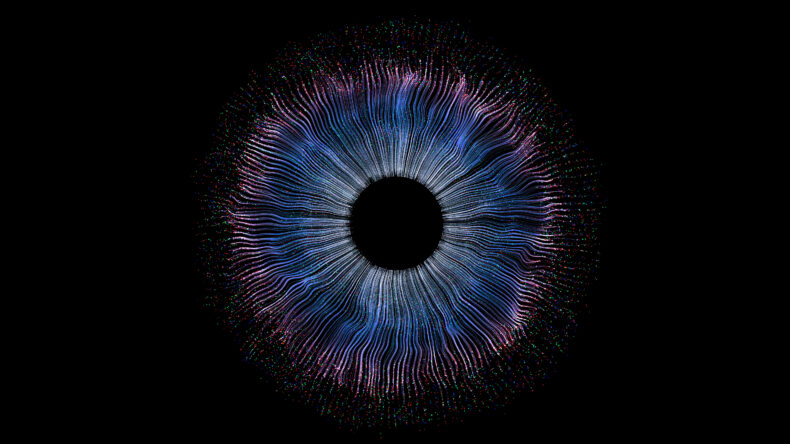
David Calkins, PhD, assistant vice president for Research, vice chair and director of Research at the Vanderbilt Eye Institute, and director of the Vanderbilt Vision Research Center, has been selected by the Research to Prevent Blindness (RPB) and Association of University Professors of Ophthalmology (AUPO) to receive the 2023 David F. Weeks Award for Outstanding Vision Research.
Calkins, one of the world’s leading authorities on the neurobiological roots of blinding eye disease and identification of new therapeutic targets based on neuronal protection, repair and regeneration, holds the Denis M. O’Day, MBBS, Chair in Ophthalmology and Visual Sciences. He will receive the award and deliver a presentation at the AUPO 2023 Annual Meeting in San Diego in January.
“I’m very grateful to the RPB and the AUPO for this award,” Calkins said, adding that this is the fourth major research award he received from the RPB. Previously, he has received the Lew W. Wasserman Merit Award, the Senior Investigator Award and the Stein Innovation Award. “The RPB has been with me since the start of my journey at Vanderbilt in 2004 as I have tried to shine a great big spotlight on blinding eye diseases as diseases of the central nervous system.”
In a press release issued by the RPB, AUPO president Joan Miller, MD, said Calkins is a “trailblazer in elucidating the pathogenesis of glaucoma as a neurodegeneration, recognizing the primary role of axonal dysfunction and demonstrating the effectiveness of neuroprotection. His work holds promise for improved therapies for patients with this blinding disease, and he is a very worthy recipient of the RPB David F. Weeks award.”
Paul Sternberg Jr., MD, chair of the Department of Ophthalmology and Visual Sciences and director of the Vanderbilt Eye Institute, said he is thrilled to see Calkins recognized by the organizations.
“Truly unique among his peer group, Dr. Calkins epitomizes what we desire in a scientific leader,” Sternberg said. “This award recognizes his contribution as a leading voice in studying blinding eye diseases not only from their impact on vision, but also from the perspective of neurodegenerative disorders that plague the central nervous system.”
The award is named in honor of David F. Weeks, former president and chair of RPH, in honor of his contributions to the field of vision research. Calkins said the prior three recipients — Donald Zack, MD, PhD, of Johns Hopkins, David Williams, PhD, of the University of Rochester, and Christine Curcio, PhD, of the University of Alabama at Birmingham — are both friends and collaborators.
Calkins and his lab have focused on studying the nuts and bolts of neurodegenerative diseases of the visual system – the basic fundamental cellular and molecular mechanisms that cause degeneration of the retina and optic projection to the brain. More specifically, his research has focused on the neuronal, glial and synaptic relationships that define the progression of neurodegeneration in glaucoma, the world’s leading cause of irreversible blindness, and his lab’s findings have demonstrated similarities between optic nerve degeneration and glaucoma to diseases like Alzheimer’s disease.
Over the past five years, Calkins and his lab have been devoted to understanding the earliest adaptive responses of neurons to disease-relevant stress. “Before we started our research, neuroscience looked at brain disease as a one-way train track – from health to the death of cells. We’ve published several high-profile papers in the last few years showing that theory is far too simplistic. Both individual neurons and entire populations of neurons together fight back against disease in an attempt to maintain functionality as long as possible.”
Calkins said he is now turning his focus to understanding the brain’s extracellular matrix (ECM), which can be thought of as a suspension of macromolecules that support everything from local tissue growth to the maintenance of an entire organ. The ECM has been widely unnoticed in neurodegeneration literature.
“This is important because the ECM envelops every neuron, glial cell and vascular element in the central nervous system but has been viewed as this passive bed of goo that holds things together,” Calkins said. “But in fact, the ECM is very bioactive and reacts to disease stress in its own way, just like neurons and astrocytes do. In the next few years, part of my focus will be understanding how the ECM contributes not only to degenerative stress but how it might also be an important therapeutic target, especially with regard to how it might influence integration of neuronal stem cells into diseased tissue.”
Calkins is a founding member and past president of the AUPO Research Directors Council and serves as chair of the Glaucoma Research Foundation’s Catalyst for a Cure Initiative to regenerate the optic nerve. In addition to authoring more than 100 research articles, reviews and book chapters, he also serves as a scientific adviser for several biotech and pharmaceutical companies around the world.

















